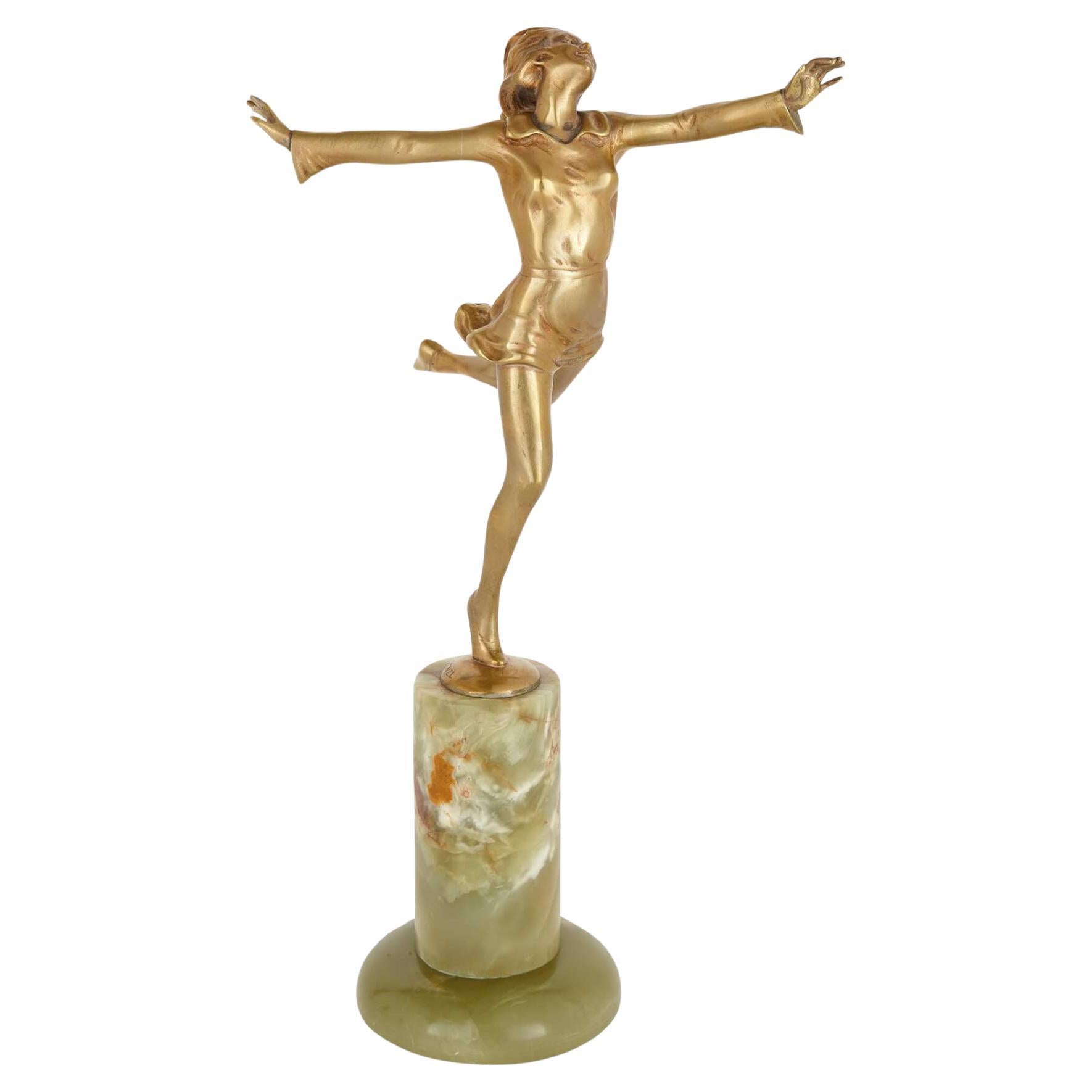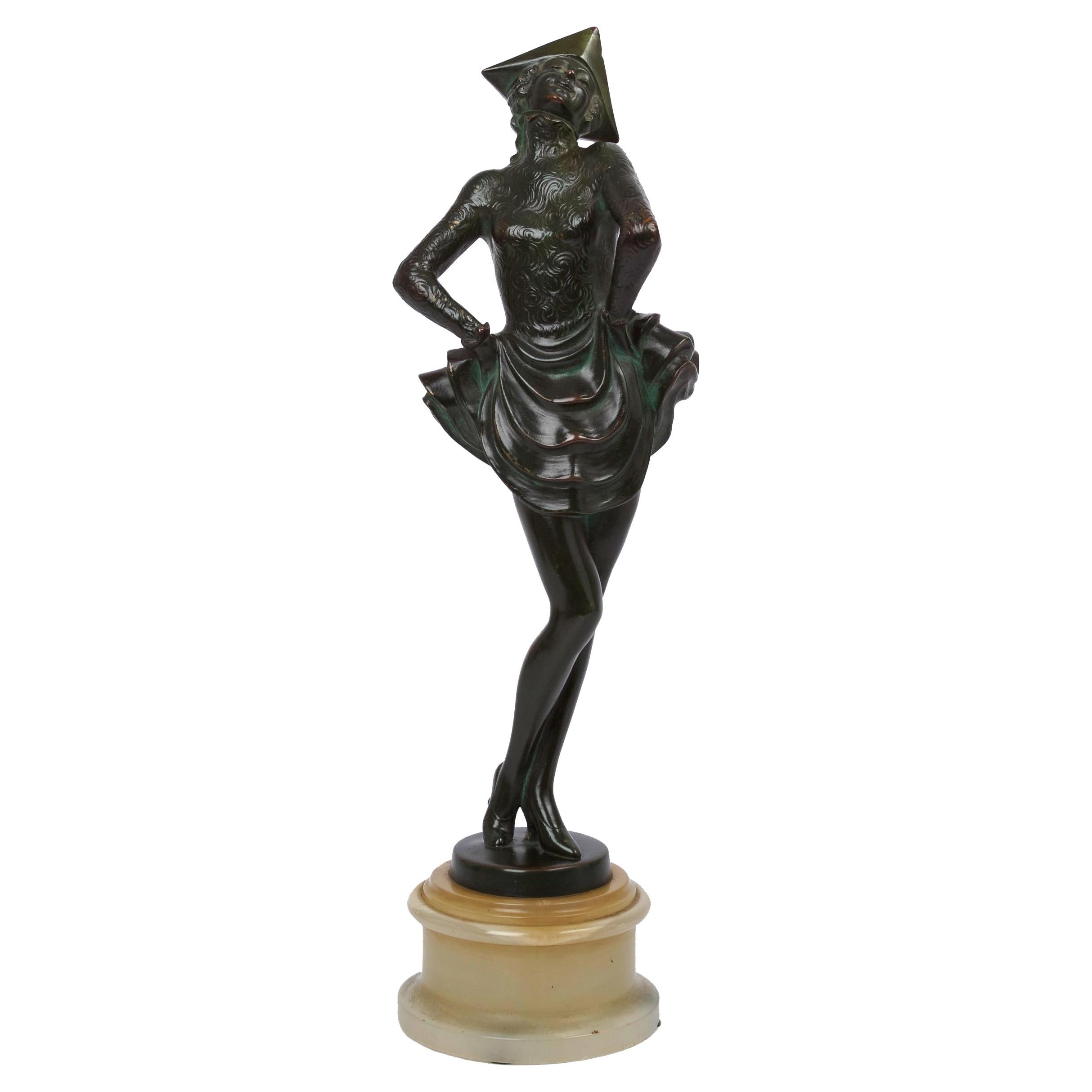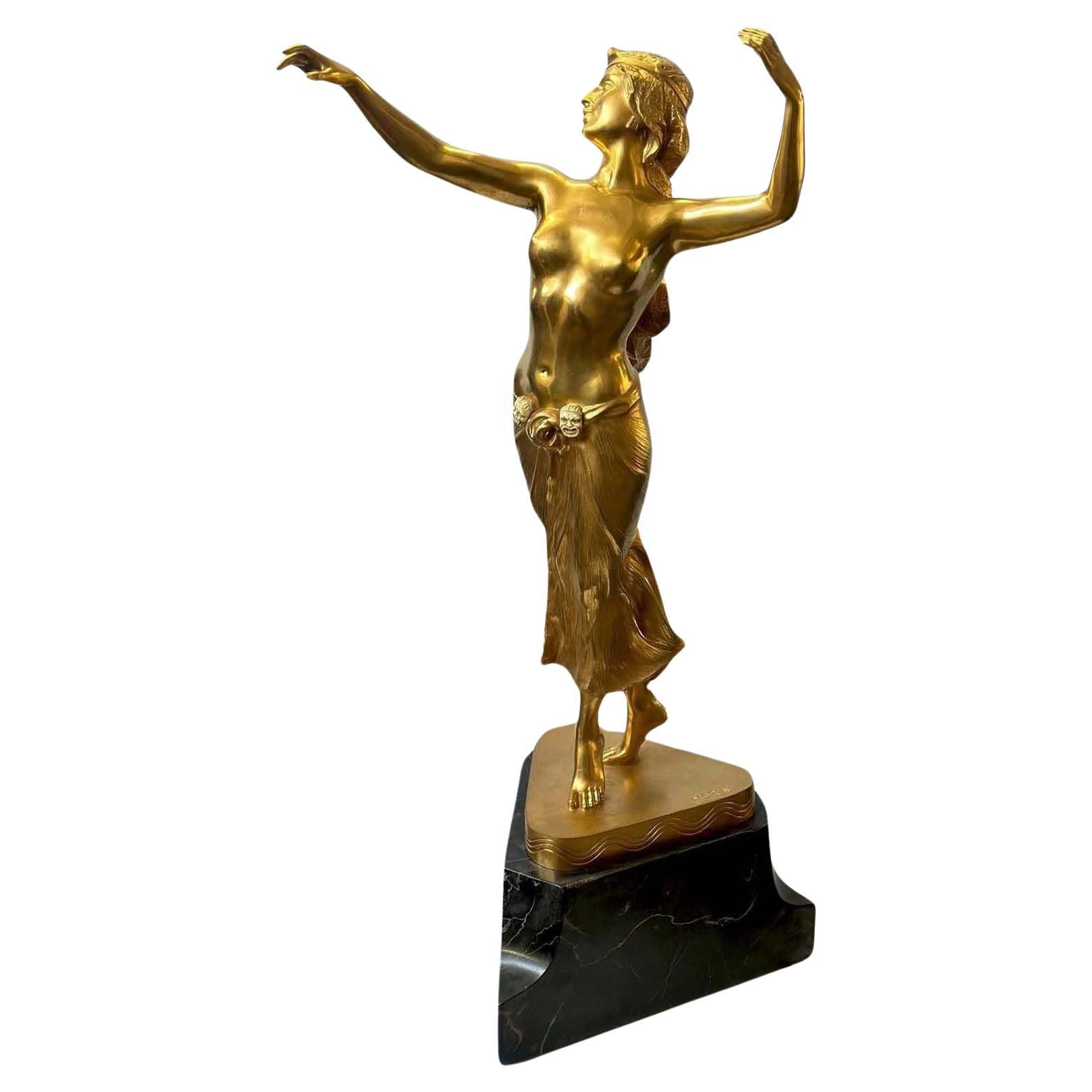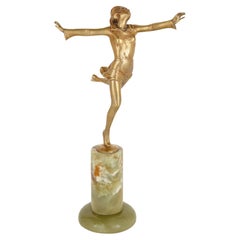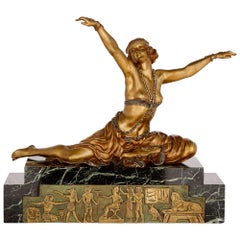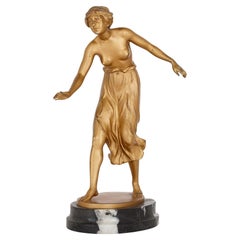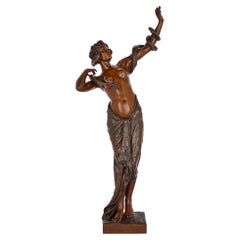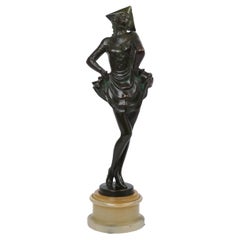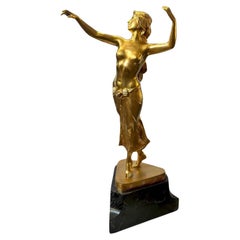Ormolu and Onyx Figure of a Dancer by Josef Lorenzl
About the Item
- Creator:Josef Lorenzl (Artist)
- Dimensions:Height: 10.04 in (25.5 cm)Width: 4.73 in (12 cm)Depth: 2.76 in (7 cm)
- Style:Art Deco (Of the Period)
- Materials and Techniques:
- Place of Origin:
- Period:
- Date of Manufacture:c. 1925
- Condition:Wear consistent with age and use.
- Seller Location:London, GB
- Reference Number:Seller: 7758B1stDibs: LU956336695382
Josef Lorenzl
Josef Lorenzl was born in Vienna on 1st September 1892. He started out working at the Vienna Arsenal in the foundry, where he learned the techniques of bronze casting. Working from a studio in the company’s grounds, he was able to produce many bronze and chryselephantine sculptures. Lorenzl was captivated by the female form he became well known for his shapely dancing girls with long, elegant legs and closed eyes. Lorenzl also was a gifted ceramicist, producing pieces for Goldscheider.
- ShippingRetrieving quote...Shipping from: London, United Kingdom
- Return Policy
More From This Seller
View AllEarly 20th Century Austrian Art Deco Figurative Sculptures
Onyx, Ormolu
Early 20th Century French Art Deco Figurative Sculptures
Marble, Ormolu, Bronze
Early 20th Century European Art Deco Figurative Sculptures
Marble, Ormolu
Antique Late 19th Century Austrian Art Deco Figurative Sculptures
Bronze
Antique Late 19th Century French Figurative Sculptures
Bronze
Vintage 1910s Italian Romantic Figurative Sculptures
Carrara Marble
You May Also Like
20th Century Austrian Art Deco Figurative Sculptures
Bronze
Mid-20th Century German Figurative Sculptures
Marble, Bronze
Early 20th Century French Art Deco Figurative Sculptures
Bronze
Vintage 1920s Austrian Art Deco Figurative Sculptures
Metal
Early 20th Century Austrian Art Deco Figurative Sculptures
Marble, Bronze
Vintage 1920s European Art Deco Figurative Sculptures
Marble, Metal
Read More
Exquisite Sèvres Porcelain Brings More to the Table than Dishes
The elegant ceramics represent the best of French artistry and innovation.
What Is Ormolu, and Why Are We Talking about It?
This golden material glamorized neoclassical furnishings and transformed upper-crust sitting rooms from France to Philadelphia in the 18th and early 19th centuries.
